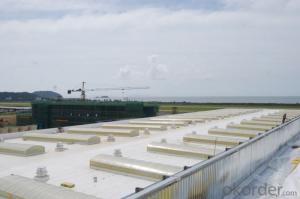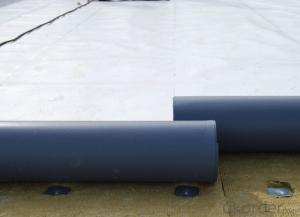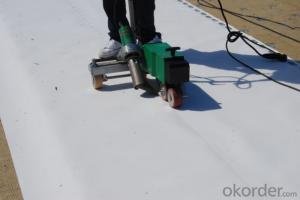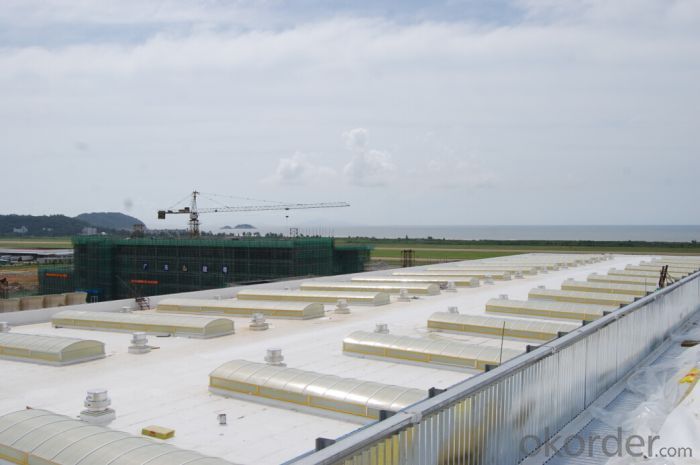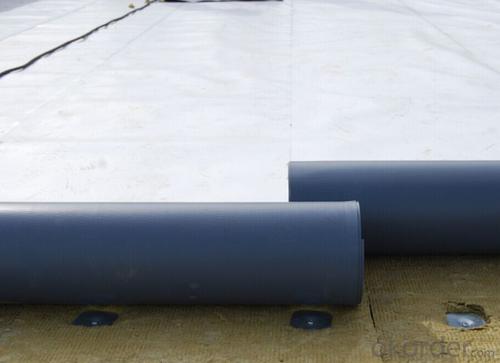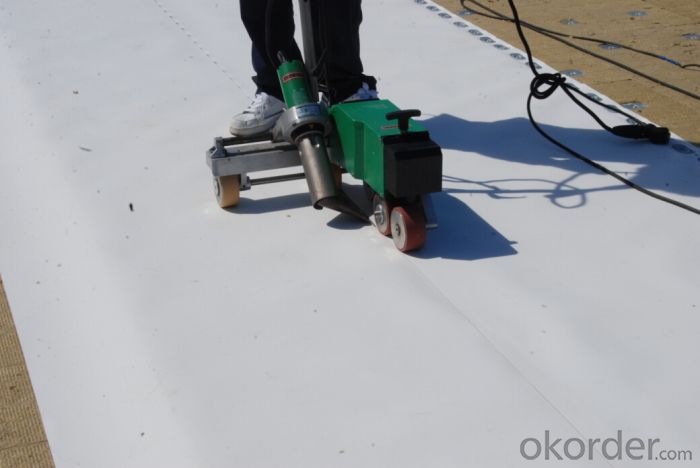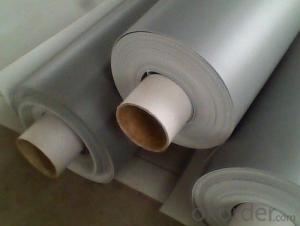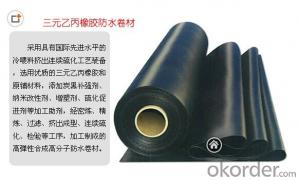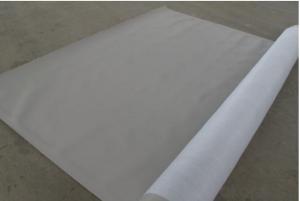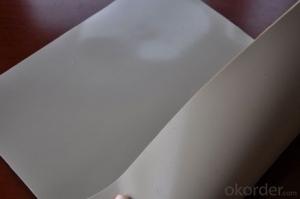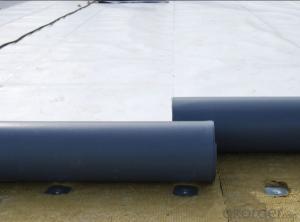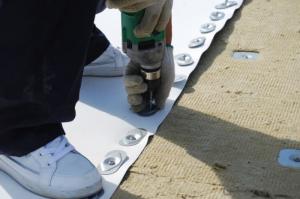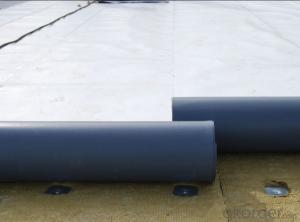TPO Waterproof Roofing Membrane Thickness with 0.8 mm
- Loading Port:
- Qingdao
- Payment Terms:
- TT OR LC
- Min Order Qty:
- 5000 m²
- Supply Capability:
- 10000 m²/month
OKorder Service Pledge
OKorder Financial Service
You Might Also Like
Product Description:
Tpo waterproof roofing membrane for sale
1.high breathable membrane
2.market:all over the world
3.resonable price
Product Main Features:
- Easy installation with good system integrity, need few accessories
- High tensile and tear strength, puncture resistance
- No plasticizer, heat aging and UV resistance, durable
- Hot-air welding, rapid welding speed, high peel strength (two times of PVC)
-No chlorine, 100% recyclable, environment friendly
- Durable hot-air welding performance and convenient maintainance
- Smooth surface, unfading and stain resistance
Product Advantages:
1. Weather resistance and durability; Excellent weld ability;
2. No any crisp agents to prevent materials brittleness;
3. Intermediate enhanced polyester mesh fabric to have high tensile strength, fatigue resistance and penetrating resistance suitable for mechanically attached roofing systems;
4. Excellent the same high and low temperature resistance as rubber materials which can keep flexible at -50° C and keep mechanical strength in high temperature;
FAQ:
Q: Can I visit your company?
A: Yes, welcome to visit our enterprise.
Q: Can I do the third party testing before loading?
A: Yes, we could accept the third party testing.
Q: Which kind of payment in your company?
A: We could accept TT, LC at sight, etc.
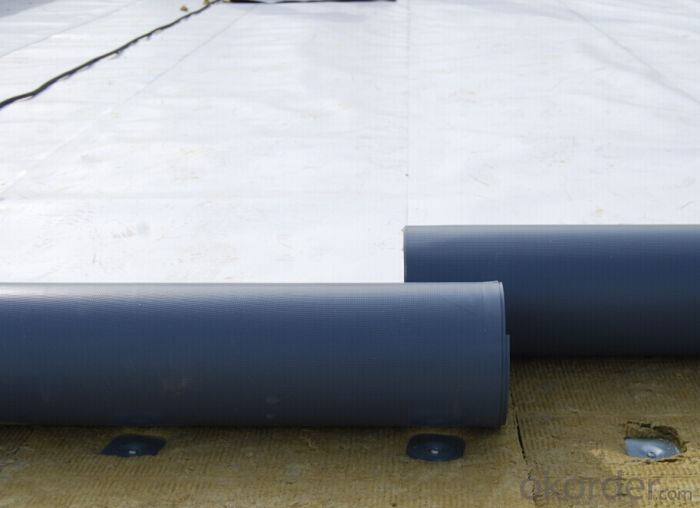
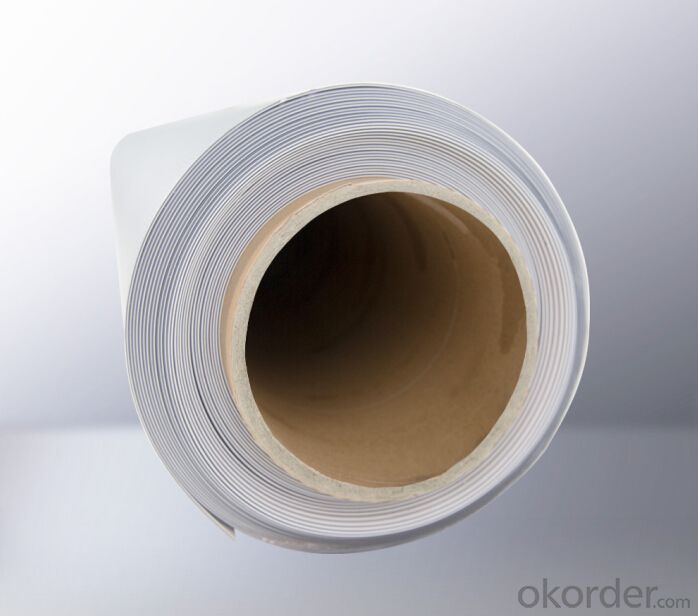
- Q: Can a waterproofing membrane be used in conjunction with fire protection systems?
- Yes, a waterproofing membrane can be used in conjunction with fire protection systems. While the main purpose of a waterproofing membrane is to prevent water penetration, it can also provide an added layer of protection against fire hazards. Many waterproofing membranes are designed to be fire resistant or have fire-retardant properties. This means that they can help to delay the spread of fire and minimize its impact on the structure. Additionally, some waterproofing membranes are specifically designed for use in fire protection systems, such as fire-rated roof membranes or fire-resistant sealants. These specialized membranes can effectively seal off potential fire pathways and provide a barrier to protect the underlying structure. Overall, using a waterproofing membrane in conjunction with fire protection systems can enhance the overall safety and security of a building.
- Q: Can a waterproofing membrane be used on PVC roofs?
- Yes, a waterproofing membrane can be used on PVC roofs. PVC roofs are commonly used in commercial and residential buildings, and applying a waterproofing membrane can provide an additional layer of protection against water damage and leaks. The membrane is typically made of materials such as synthetic rubber or thermoplastic that are specifically designed to prevent water penetration. By installing a waterproofing membrane on a PVC roof, it can enhance its durability and extend its lifespan.
- Q: How long do waterproofing membranes last?
- The lifespan of waterproofing membranes can vary depending on various factors such as the quality of the membrane, the installation process, and the environmental conditions. However, on average, high-quality waterproofing membranes can last between 10 to 20 years.
- Q: Can a waterproofing membrane be used for shower installations?
- Indeed, for shower installations, it is advisable to employ a waterproofing membrane to avert water intrusion into the walls, floors, or any susceptible areas that may result in harm. A waterproofing membrane serves as a shield, prohibiting water infiltration into the nearby regions. This is especially crucial in showers where water is incessantly utilized and splattered. By implementing a waterproofing membrane, you guarantee that your shower area remains impervious to water and safeguarded against any possible water-related destruction.
- Q: Can a waterproofing membrane be used for balconies and terraces?
- Yes, a waterproofing membrane can be used for balconies and terraces. In fact, it is highly recommended to use a waterproofing membrane in these areas to prevent water penetration and damage. Balconies and terraces are exposed to outdoor elements such as rain, snow, and sunlight, which can cause moisture buildup and deterioration of the underlying structure. A waterproofing membrane acts as a barrier, preventing water from seeping through the surface and causing potential leaks, mold growth, or structural damage. It provides an effective solution to protect the balcony or terrace, ensuring its longevity and durability. Additionally, waterproofing membranes are available in different types and materials, allowing for flexibility in choosing the most suitable option based on the specific requirements of the balcony or terrace.
- Q: Can a waterproofing membrane be used on concrete slabs or foundations?
- Yes, a waterproofing membrane can be used on concrete slabs or foundations. Waterproofing membranes are commonly used in construction to prevent water penetration and protect structures from moisture damage. By applying a waterproofing membrane to a concrete slab or foundation, it creates a barrier that prevents water from seeping into the concrete and causing potential issues like cracking, water damage, or mold growth. This membrane is designed to withstand hydrostatic pressure, which is the force exerted by standing water, and it can effectively keep the area dry. It is important to select a suitable waterproofing membrane that is compatible with concrete and the specific conditions of the project. Proper installation and maintenance of the membrane are also crucial for long-term waterproofing effectiveness.
- Q: Can a waterproofing membrane be used in new construction?
- Yes, a waterproofing membrane can be used in new construction. In fact, it is often recommended to install a waterproofing membrane during the construction phase to prevent water damage to the building's foundation and structure.
- Q: Can a waterproofing membrane be used for soundproofing purposes?
- Yes, a waterproofing membrane can be used for soundproofing purposes to some extent. While its primary function is to prevent water penetration, it can also help to reduce sound transmission. Waterproofing membranes are typically made of materials that have good acoustic properties, such as rubber or a combination of rubber and asphalt. These materials can absorb and dampen sound waves, thereby reducing the amount of noise that passes through a wall or floor. However, it is important to note that the soundproofing effectiveness of a waterproofing membrane may not be as high as that of specialized soundproofing materials like acoustic panels or insulation. Therefore, if soundproofing is the main goal, it is recommended to consider using dedicated soundproofing solutions in addition to or instead of a waterproofing membrane.
- Q: Can a waterproofing membrane be applied in wet conditions?
- No, a waterproofing membrane cannot be applied in wet conditions. In order for the membrane to properly adhere to the surface and create an effective barrier against water, the surface must be dry and free from any moisture. Applying a waterproofing membrane in wet conditions can result in poor adhesion, which can compromise its effectiveness and lead to water leakage. It is essential to ensure that the surface is completely dry before applying the membrane to achieve the desired waterproofing results.
- Q: Can a waterproofing membrane prevent leaks from occurring?
- Yes, a waterproofing membrane can prevent leaks from occurring. A waterproofing membrane is a thin layer of material that is applied to a surface to make it completely impermeable to water. It acts as a barrier, preventing water from seeping through and causing leaks. When properly installed and maintained, a waterproofing membrane can effectively protect various structures such as roofs, basements, bathrooms, or foundations from water damage. It is designed to withstand the forces of nature, including rain, snow, and moisture, and can significantly reduce the risk of leaks and water infiltration. However, it is important to note that the effectiveness of a waterproofing membrane also depends on the quality of the product, proper installation, and regular maintenance.
Send your message to us
TPO Waterproof Roofing Membrane Thickness with 0.8 mm
- Loading Port:
- Qingdao
- Payment Terms:
- TT OR LC
- Min Order Qty:
- 5000 m²
- Supply Capability:
- 10000 m²/month
OKorder Service Pledge
OKorder Financial Service
Similar products
Hot products
Hot Searches
Related keywords
